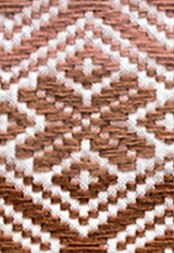Warp (weaving)
From Wikipedia, the free encyclopedia
In weaving cloth, the warp is the set of lengthwise yarns that are held in tension on a frame or loom. The yarn that is inserted over-and-under the warp threads is called the weft, woof, or filler. Each individual warp thread in a fabric is called awarp end or end.[1][2] Warp means "that which is thrown across" (Old English wearp, from weorpan, to throw, cf. German werfen, Dutch werpen).
Very simple looms use a spiral warp, in which a single, very long yarn is wound around a pair of sticks or beams in a spiral pattern to make up the warp.[3]
Because the warp is held under high tension during the entire process of weaving, warp yarn must be strong. Yarn for warp ends is usually spun and plied fibre. Traditional fibres for warping are wool, linen and silk. With the improvements in spinning technology during the Industrial Revolution, it became possible to make cotton yarn of sufficient strength to be used as the warp in mechanized weaving. Later, artificial or man-made fibres such as nylon or rayon were employed.
Notes [edit]
References [edit]
- Barber, E. J. W. (1991). Prehistoric Textiles. Princeton University Press. ISBN 0-691-00224-X.
- Burnham, Dorothy K. (1980). Warp and Weft: A Textile Terminology. Royal Ontario Museum. ISBN 0-88854-256-9.
| |||||||||||||||||||||||||
| This textile arts article is a stub. You can help Wikipedia by expanding it. |




